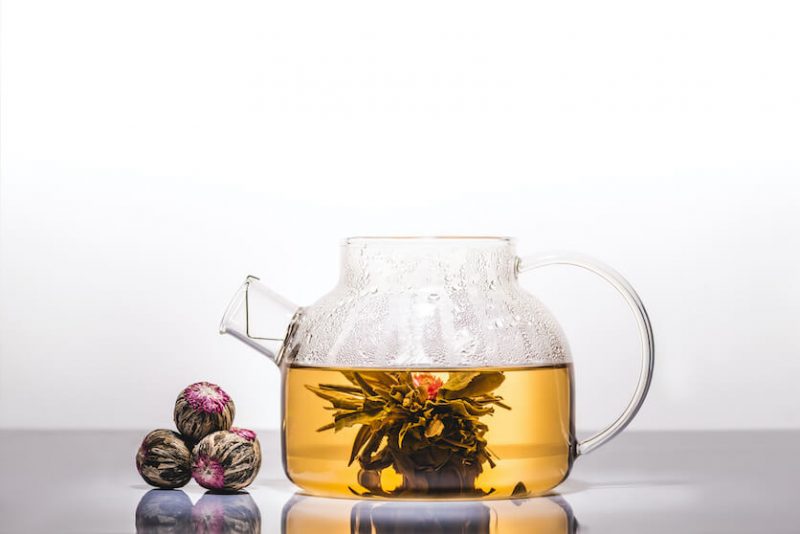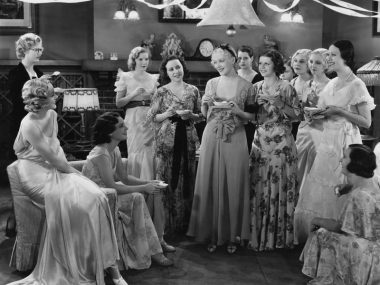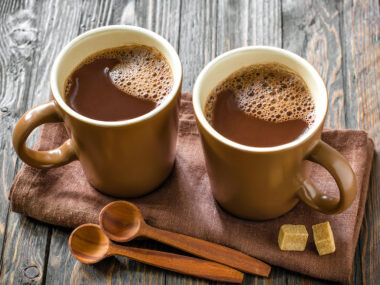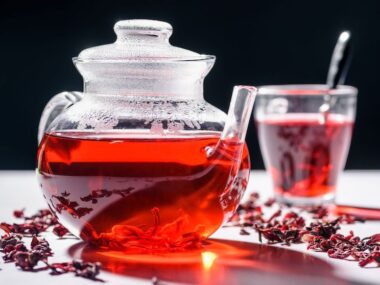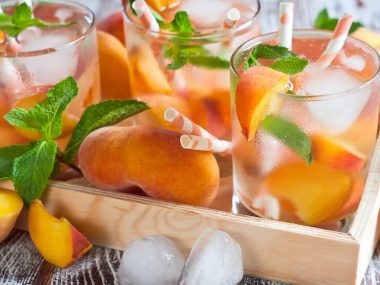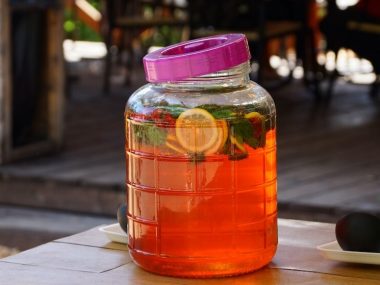A new life form opens up before our eyes inside our teapot, revealing an artful form of sheer beauty. Serve this up at your next dinner party or gathering, and watch the expressions on the faces of your guests! Flowering tea is a visual eye candy, also serving a powerful delight of taste.
Table of Contents
What Is Flowering Tea?
Flowering tea (also known as blooming tea) is a Chinese artisan tea made from brewing a compacted bulb of dried tea leaves, flowers, petals, or herbs. During the brewing period, the water rehydrates the dried tea flower ball causing it to open. Watching the tea ball flower open slowly provides a visual element to the tea.
What Is A Tea Bulb?
A tea bulb is an artisan, handcrafted form of tea that looks like a flower bulb or small plant ball. Depending on the type of flowering tea it is, the shape varies. The most common shape is round (about the size of a large gumball). However, they may have an hourglass shape, mushroom shape, or an irregular shape. The flowering tea artists craft each flowering tea bulb into its unique shape.
What Are Blooming Flowering Tea Balls Made From?
The base of a Chinese flowering tea bulb is usually made from Chinese green tea leaves. However, they may occasionally make some from black tea leaves. Edible flowers of varying colors, sizes, textures, and flavors become the centerpiece of each tea bulb.
Assembling A Tea Bulb
The tea bulb artists typically sit at a very large table where they carefully pick twigs of moistened tea leaves from a pile of tea, arranging them into measured bunches (about 2” long.) The bunch of tea leaves is tied together in the middle to secure them.
The next step is to select the flower(s) to go in the middle. The step of adding flowers is where the art of their craft lies because they must secure the flowers to the tea leaves in such a manner, so the flowers are able to bloom and open up in the hot water. A single flower may be inserted, or flowers of various heights and textures may be the center point.
Once the tea bulb is complete with tea leaves and flowers, shaping the bulb takes place. Different tea companies use different methods, but the most common one consists of placing the tea bulb into a silk sock-like bag. The silk-covered tea bulb is rolled between the hands to form a ball or other shapes.
What Flowers Can Be Used For Tea?
Tea bulbs may contain one or several of the following flowers.
- Marigold
- Osmanthus Lily
- Hibiscus
- Carnation
- Rose
- Calendula
- Chrysanthemum
- Jasmine
- Globe Amaranth
Different Kinds Of Flowering Tea
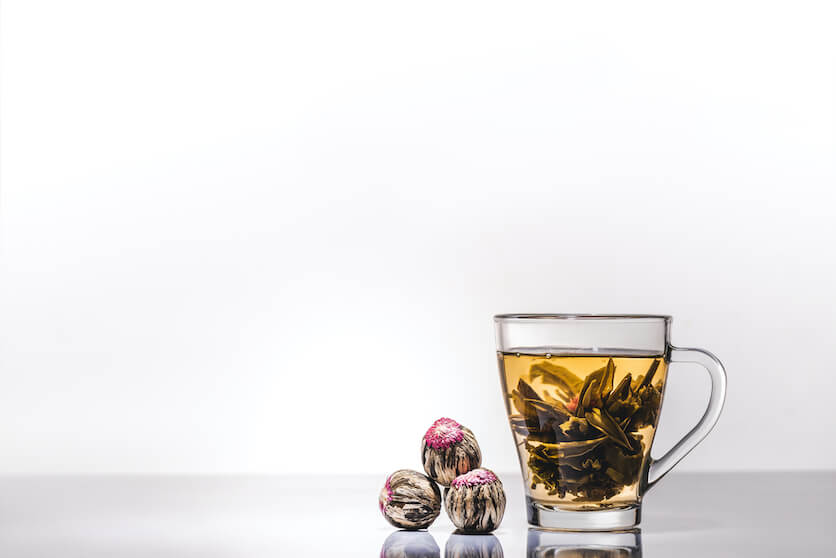
Flowering tea bulbs seem to all have the same appearance of the tea leaf base that acts as an anchor for the flowers. Because of this, many tea bulbs, when infused and open in water, may look very similar to one another. The flavors of each tea bulb set them apart. Jasmine flower tea has infusions of jasmine that elevate the flavor to a lovely aromatic floral-tasting tea. Other tea bulbs may be infused with other flowers or flavorings to create a different tea.
A Little History On Flowering Tea
This beautiful form of tea has a very ambiguous origin. Finding any historical records on when this tea made its appearance into the tea world is impossible. Tea Time Magazine published an article on flowering tea that briefly mentioned this tea may have originated back in the 10th century in the Yunnan Province of China. The shaping of flowering tea was a form of amusement for the emperor.
China News Service paints an entirely different historical picture of flowering tea. In an article they published, flowering tea made its first appearance back in the 1990s in China. It’s claimed that Xue Tongyun of Fu’an City, China created the craft of flowering tea, calling it “Flower Dancing.” Tongyun’s niece, Li Yang, was interviewed by China News Service’s reporter of the featured article. Yang explains the painstaking process to create each tea bulb.
The tea used for the tea bulbs was stripped of tea leaves, leaving the tea bud and stem intact. If the tea were to be infused with flavor, it would go through the infusion process. Next, the tea buds/stems and flowers were sewn together, shaped, and go on to be further processed. She stated there are over twenty sub-processes each tea bulb undergoes. The overall flowering tea processing method has five Chinese patents.
The history behind this artful tea will remain a mystery; however, tea drinkers will continue to be enthralled with the beauty and magic of a tea bulb unfolding within a teapot.
What Is The Best Flowering Tea?
Narrowing down the best flowering tea is difficult because everyone’s perception of taste, appearance, and aroma is unique. To find the best flowering tea when shopping around, you’ll find the best in quality with tea shops. Tea shops are known to source their teas from reputable, fair-trade tea growers and manufacturers. You know your tea bulbs are fresher from a tea shop compared to an unknown online retailer.
How Much Caffeine Is In Flowering Tea?
The majority of flowering tea bulbs are made with green tea. It isn’t easy to gauge the levels of caffeine because we don’t know how much green tea goes into making a tea bulb. Tea bulbs are about a 50/50 combination of half green tea with half flower. A rough estimate of caffeine in a six-ounce cup of this tea might be anywhere from 20-40 mg of caffeine.
There are some tea bulbs made with black tea. Those will be slightly higher in caffeine compared to their green tea counterparts.
Is It Okay To Drink Flowering Tea Every Day?
We don’t have the medical expertise to recommend or provide advice on consuming any tea. There are a few things to consider with tea consumption. Tea may cause side effects, adverse reactions, interact with medications, or make an existing condition worse. It’s best to consult with your healthcare provider before drinking tea.
What Is Flower Tea Good For?
Flowering tea is intended to provide an artful element to enhance teatime with the unfolding of the tea bulb coming to life. This tea is meant to be brewed/steeped in a clear teapot for tea drinkers to admire the beauty of the tea bulb.
Whether a flowering tea is made with green, black, or white tea, there are health benefits to be gained. BioMed Central published a research article that outlines the benefits of green tea. These benefits include inhibiting infections and viruses, boosts the immune system, reduces the risk of Parkinson’s and Alzheimer’s, and helps to reduce chronic disease.
A research article entitled “Tea and Health: Studies in Humans” reports black tea helps with weight loss, supports the cardiovascular system, acts as an antidiabetic, and even reduces arthritic conditions.
Is Flowering Tea Safe To Drink?
The only person that can verify the safety of this tea for you is your doctor. Something to think about when it comes to flowering teas is the added herbal element because of the flowers. Some herbs can cause side effects, adverse reactions, interact with medication, cause allergic reactions, or cause a medical condition to worsen.
How To Make Flowering Tea
We will make tea bulbs from scratch, so you get the full scope of this beautiful tea. The art that goes into crafting one tea bulb is something to be admired and appreciated.
How Do You Make Homemade Blooming Tea?
This is a great project for the entire family to do. Once done, teatime is something you and your family will enjoy to the fullest.
Ingredients:
(yields approximately 6 tea bulbs)
- 2 cups of whole leaf Chinese green tea
- Silk string
- Silk tea bags
- 6 dried edible (food-grade) calendula, chrysanthemum, or marigold flowers
Directions:
Assemble the tea bulbs
- Pre moisten the tea leaves and dried flowers. Soak in room temperature water for 2 minutes.
- Remove from the water and place on a paper towel.
- Gather a few green tea leaves. You will form a 2” bunch (perpendicular.)
- Tie the green tea leaves in the middle.
- Place one flower in the center of your tea leaves and secure it with string.
- Gently fold the green tea leaves over the flower while shaping it into a ball.
- Place the semi-ball-shaped tea bulb into a silk tea bag.
- Form a tight ball by twisting one end of the teabag.
- Tie the end of the teabag where it is twisted to keep the tea bulb in its ball shape.
- Place the finished tea bulbs into the oven and bake at 200 degrees (F) for 20 minutes.
- Remove from the oven and allow to cool.
- Remove the silk tea bag outer layer.
- Snip the string ties in the tea bulb
- Store the tea bulbs in an airtight container until ready to use.
Brew the flowering tea. Use 4 cups of water per tea bulb.
- Bring the water to a boil.
- Pour the hot water into a clear teapot.
- Drop one flowering tea bulb into the teapot.
- Cover and allow to steep for 5-7 minutes.
- Pour the tea and enjoy!
The Magic Of Blooms
There’s a deep symbolic presence in every flowering tea. As it opens up, it reminds us life is full of beauty, revealing itself to us in numerous ways. We ought to be mindful of what’s before us, and who knows, it might be in the form of a bloom in a teapot.
